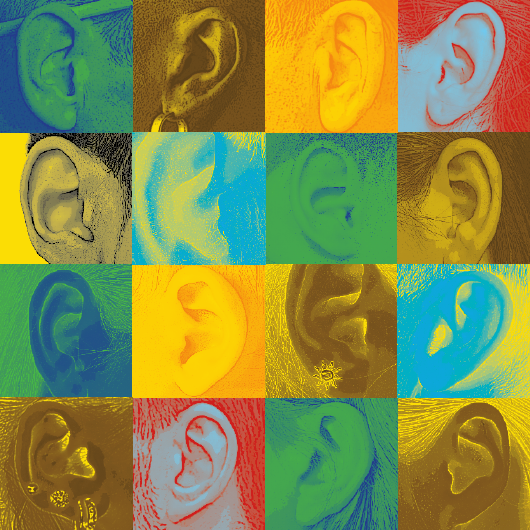Simultaneous measurement of auditory-steady-state responses and otoacoustic emissions to estimate peripheral compression
Abstract
Assessment of the compressive nonlinearity in the hearing system provides useful information about the inner ear. Auditory-steady state responses (ASSR) have recently been used to estimate the state of the compressive nonlinearity in the peripheral auditory system. Since it is commonly assumed that outer hair cells in the inner ear play an important role in the compressive nonlinearity, it is desirable to selectively obtain information about the inner ear. In the current study, the signal in the ear canal present during ASSR measurements is utilized to extract sinusoidally-amplitude modulated otoacoustic emissions (SAMOAEs). It is hypothesized that the stimulus used to evoke ASSRs will cause acoustic energy to be reflected back from the inner ear into the ear canal, where it can be picked up as an otoacoustic emission (OAE) and provide information about cochlear processing. Results indicate that SAMOAEs can be extracted while measuring ASSRs using sinusoidally amplitude modulated tones. However, comparison of simulations using a transmission model and the data show that the SAMOAE measured above 50 dB SPL are strongly influenced by the system distortion. A robust extraction and evaluation of SAMOAE in connection with ASSR may be possible by a proposed method to minimize the distortion. The ability to evaluate SAMOAE over a large input level range during ASSR measurement will provide information about the state of the peripheral auditory system without the need of additional measurement time.
References
Encina Llamas, G., Epp, B., and Dau, T. (2014). “Comparison of peripheral compression estimates during auditory steady state responses (ASSR) and distortion-product otoacoustic emissions (DPOAE),” 37th Annual MidWinter Meeting of the Association for Research in Otolaryngology, San Diego, CA, USA.
Epp, B., Verhey, J.L., and Mauermann, M. (2010). “Extraction of OAEs during multifrequency ASSR recordings with the goal to estimate peripheral compression,” J. Acoust. Soc. Am., 128, 1870-1883.
Kalluri, R. and Shera, C. (2007). “Comparing stimulus-frequency otoacoustic emissions measured by compression, suppression, and spectral smoothing,” J. Acoust. Soc. Am., 122, 3562-3575.
Nelson, D.A. and Schroder, A.C. (2004). “Peripheral compression as a function of stimulus level and frequency region in normal-hearing listeners,” J. Acoust. Soc. Am., 115, 2221-2233.
Plack, C.J. and Oxenham, A.J. (1998). “Basilar-membrane nonlinearity and the growth of forward masking,” J. Acoust. Soc. Am., 103, 1598-1608.
Rhode, W. and Recio, A. (2001). “Basilar-membrane response to multicomponent stimuli in chinchilla,” J. Acoust. Soc. Am., 110, 981-999.
Schairer, K., Fitzpatrick, D., and Keefe, D. (2003). “Input-output functions for stimulus-frequency otoacoustic emissions in normal-hearing adult ears,” J. Acoust. Soc. Am., 114, 944-966.
Downloads
Published
How to Cite
Issue
Section
License
Authors who publish with this journal agree to the following terms:
a. Authors retain copyright* and grant the journal right of first publication with the work simultaneously licensed under a Creative Commons Attribution License that allows others to share the work with an acknowledgement of the work's authorship and initial publication in this journal.
b. Authors are able to enter into separate, additional contractual arrangements for the non-exclusive distribution of the journal's published version of the work (e.g., post it to an institutional repository or publish it in a book), with an acknowledgement of its initial publication in this journal.
c. Authors are permitted and encouraged to post their work online (e.g., in institutional repositories or on their website) prior to and during the submission process, as it can lead to productive exchanges, as well as earlier and greater citation of published work (See The Effect of Open Access).
*From the 2017 issue onward. The Danavox Jubilee Foundation owns the copyright of all articles published in the 1969-2015 issues. However, authors are still allowed to share the work with an acknowledgement of the work's authorship and initial publication in this journal.


